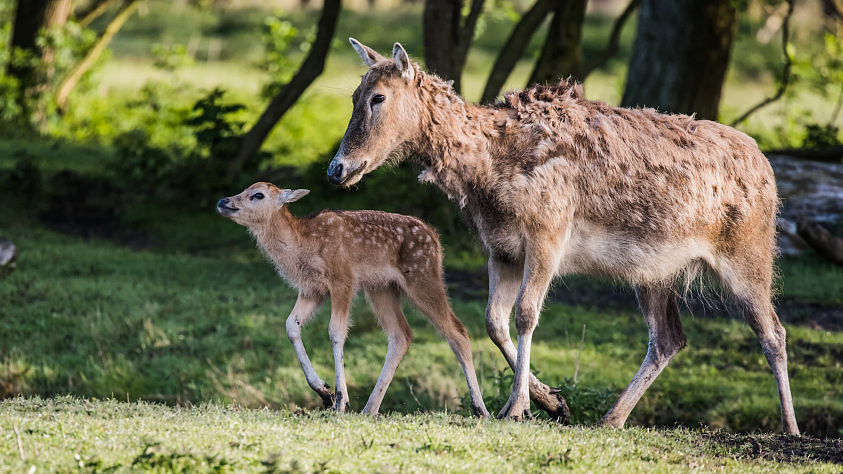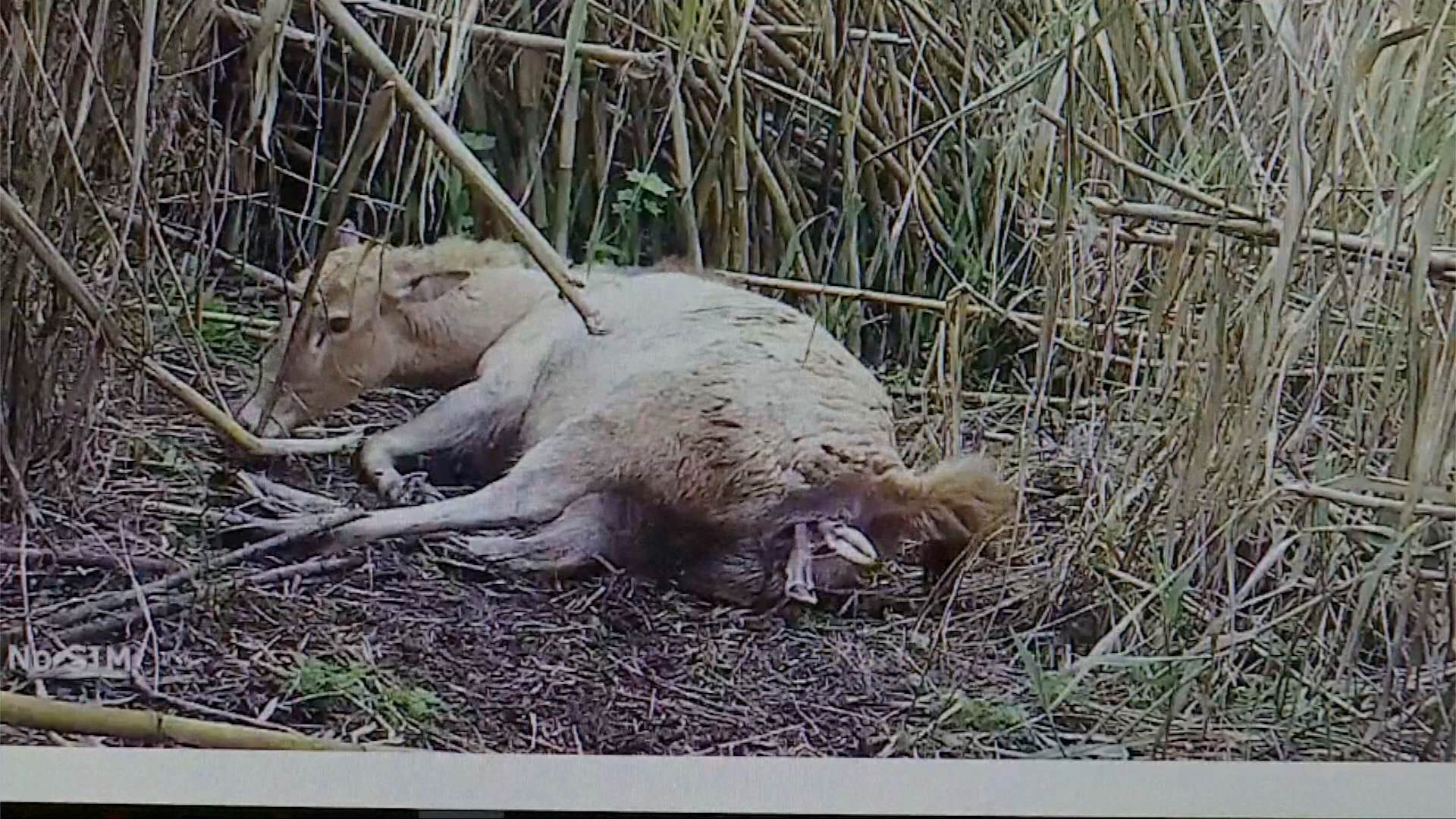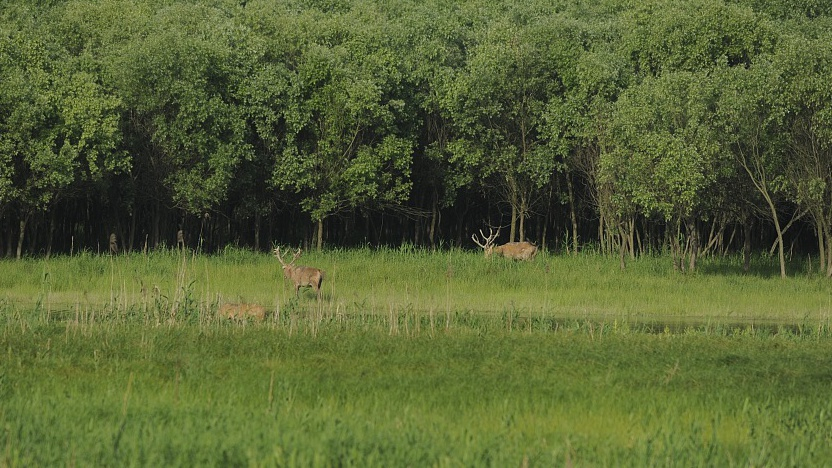
Animal
12:43, 01-Jun-2019
Wild Milu deer giving birth captured by infrared camera in central China
CGTN
01:14

A wild Milu deer giving birth was recently recorded by an infrared camera at the Tian'ezhou Milu National Nature Reserve in central China's Hubei Province.

Video footage shows the female Milu deer lying on one side in the grass. /Screenshot from the video.
Video footage shows the female Milu deer lying on one side in the grass. /Screenshot from the video.
The footage shows a female Milu deer lying on her side in the grass giving birth. It is also clear that the front hooves of the baby came out.
However, after 20 minutes of making no significant progress, the mother deer got up and walked away from the camera.

The front hooves of the baby deer come out. /Screenshot from the video.
The front hooves of the baby deer come out. /Screenshot from the video.
According to Yang Tao, an engineer at the Tian'ezhou Milu National Nature Reserve, "the fawn's front hooves came out first, then its head, and the rest will be easier after that. A pregnant Milu deer usually leaves its group alone for a secluded place, such as high grass in the woods, before it's due to give birth."
The Milu deer would move around during birth to help with the procedure. "After giving birth, the mother will hide the newborn where it is. When the fawn is able to move after one to three days, it'll then be moved by the mother," said Yang.
Two days later, it returned to the same spot with the newborn, whose legs still seemed to be wobbly.
Milu deer, also known as "Pere David's deer," is under first-class state protection in China.

The Tian'ezhou Milu National Nature Reserve in Hubei Province, central China. /VCG Photo
The Tian'ezhou Milu National Nature Reserve in Hubei Province, central China. /VCG Photo
In recent years, workers at the nature reserve have made great efforts in monitoring the Milu deer's population and to create a safer and more comfortable environment for this rare animal.
Yang said that there have already been 187 newborn Milu deer this year, and the population at the nature reserve is now more than 800. The total population of Milu deer in Shishou, including the ones outside the reserve, has exceeded 1,600.
(Cover image via VCG.)
(If you want to contribute and have specific expertise, please contact us at nature@cgtn.com.)

SITEMAP
Copyright © 2018 CGTN. Beijing ICP prepared NO.16065310-3
Copyright © 2018 CGTN. Beijing ICP prepared NO.16065310-3